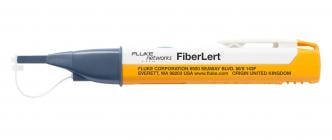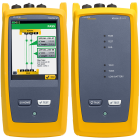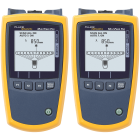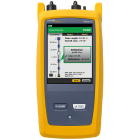광케이블이란 무엇인가? 가이드
2024년 3월 20일 / 일반, 101 학습
영화 스트리밍, 전화 통화, 내시경 검사는 서로 전혀 연관성이 없다고 생각할 수 있지만, 이들은 보이지 않는 광케이블 네트워크로 연결되어 있다는 공통점을 가지고 있습니다. 이 안내서에서는 이 강력한 기술의 모든 것을 안내해 드립니다. 광케이블이 어디에 사용되고, 어떻게 작동하는지 그리고 광케이블의 이점이 무엇인지 알게 되실 것입니다.
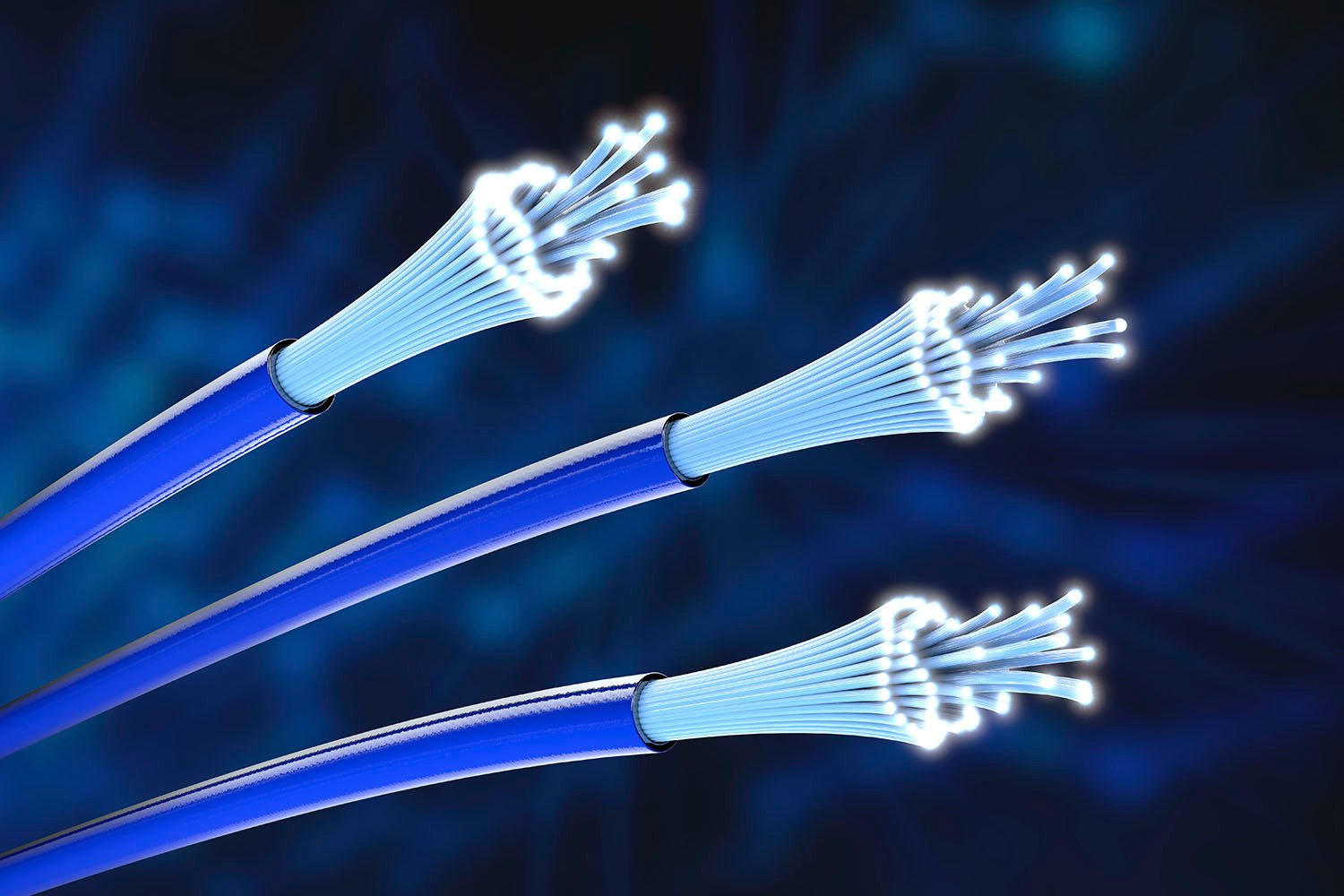
광케이블이란 무엇인가?
광케이블은 유리 가닥을 통해 빛의 펄스로 데이터를 전송하는 기술입니다. 이 방식은 최소한의 손실로 장거리 고속 데이터 전송이 가능하므로 최신 데이터 네트워크, 통신 및 인터넷에 필수적인 기술입니다.
광케이블의 용도는?
네트워크 응용 분야가 확장되고 조직이 그 어느 때보다 많은 데이터(이미지, 음성, 동영상 등)를 수집함에 따라 더 높은 데이터 전송 용량과 속도에 대한 요구가 계속 증가하고 있습니다. 이를 위해서는 더 높은 대역폭을 지원하는 배선이 필요합니다. 광케이블 인프라는 데이터 통신 네트워크에 점점 더 많이 사용되는 매체입니다.
광케이블은 무엇으로 만들어지는가?
광케이블은 머리카락 굵기보다 두껍지 않은 얇은 유리 가닥 또는 실로 만들어집니다.
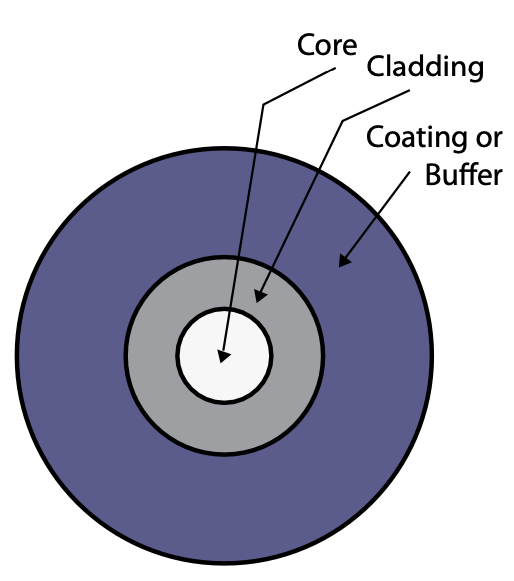
광케이블 가닥은 코어, 클래딩 층, 그리고 흔히 버퍼라고 부르는 외부 코팅으로 구성됩니다.
- • 광케이블의 코어는 매우 얇은 초순수 유리 가닥으로 만들어집니다. 광원(예: LED 또는 레이저)에서 생성된 빛 신호는 송신기에서 코어로 발사됩니다.
- • “클래딩”이라고 하는 유리 층이 광케이블의 코어를 둘러싸고 있으며 코팅 역할을 합니다. 빛을 코어로 다시 반사하여 신호 전력을 유지하는 데 도움이 됩니다.
- • 광케이블의 외부 재킷 또는 “버퍼”는 일반적으로 플라스틱 재질로 만들어집니다. 이는 습기와 손상으로부터 광케이블을 보호하여 코어에서 유리 섬유의 강도를 보존합니다.
이러한 특수 레이어의 조합 덕분에 빛은 케이블 네트워크 전체에서 거의 방해받지 않고 이동할 수 있습니다. 그러면 수신기는 링크 끝에서 그 신호를 수신합니다.
광케이블의 목적은?
광케이블 기술의 주요 목적은 대용량의 데이터를 고속으로 안정적으로 전송할 수 있도록 하는 것입니다. 이 기능은 디지털 사회의 중추를 이루는 방대한 상호 연결 네트워크를 지원하여 언제 어디서나 효율적으로 커뮤니케이션하고 액세스할 수 있도록 하는 데 매우 중요합니다.
광케이블의 장단점
광케이블은 구리 케이블에 비해 더 넓은 대역폭과 더 빠른 속도, 전자기 간섭에 대한 내성 등 다양한 이점을 제공합니다.
- • 번개처럼 빠른 속도: 속도가 얼마나 빠른가? 광케이블은 최대 800Gbps의 속도로 데이터를 전송할 수 있습니다(현재 데이터 센터의 최대 속도이지만 이론적으로는 이보다 더 빠른 속도도 가능). 광대역 인터넷 서비스는 이러한 케이블을 활용하여 수백만 명의 고객에게 가장 빠른 인터넷 속도를 제공합니다.
- • 더 넓은 대역폭: 광케이블은 광대역의 광 주파수를 전송할 수 있어 더 높은 처리량으로 더 많은 데이터를 전송할 수 있습니다. 예를 들어, 단일 광케이블 연결은 HD 형식의 영화를 0.1초 미만 이내에 전송할 수 있지만, 일반적인 구리선 사무실 네트워크에서는 동일한 작업을 수행하는 데 약 1분 정도 걸립니다.
- • 데이터 손실 감소: 손실 또는 감쇠는 배선 및 네트워크 표준의 성능 척도입니다. 광케이블은 전력 배선, 무선 신호, 심지어 태양 플레어에 의한 전자기 간섭으로 인한 데이터 손실에 덜 민감합니다.
- • 부식이 없음: 광케이블은 비금속 재료로 만들어지기 때문에 광케이블 연결부가 부식되지 않습니다. 그러나 광케이블은 먼지와 습기에 의한 오염에 취약하므로 최상의 성능을 위해 광케이블 연결부를 정기적으로 검사하고 깨끗하게 유지해야 합니다.
- • 장거리 전송: 구리 케이블은 신호 중계기 없이 길이가 100미터로 제한되지만 광케이블은 신호 강도를 잃지 않고 100킬로미터까지 신호를 전송할 수 있습니다.
광케이블 배선에는 몇 가지 까다로움이 있습니다. 광케이블은 구리에 비해 가격 경쟁력이 있지만, 광케이블 네트워크에 필요한 전자 제품은 더 비쌉니다. 광케이블은 전문 도구, 안전 규칙 및 설치, 유지보수, 수리 시 기술이 필요하며, 적절한 장비, 교육, 지원을 통해 관리할 수 있습니다.
광케이블은 누가 사용하는가?
초고속 인터넷을 손쉽게 이용하는 것부터 스마트시티 연결성을 강화하는 것까지, 광케이블은 현존하는 가장 다재다능한 기술 중 하나라고 할 수 있습니다. 광케이블의 몇 가지 사용 방법:
-
• 전기통신 및 인터넷
광케이블은 브로드밴드 인터넷 연결에서 중요한 역할을 하며 다양한 네트워크와 데이터 센터를 연결하고 인터넷의 중추 역할을 합니다. 클라우드 컴퓨팅 제공업체는 또한 광케이블 인프라에 크게 의존합니다. -
• 의료 산업
광케이블은 고해상도 의료 이미지에 사용하기에 이상적입니다. 내시경 검사, 레이저 수술, 광간섭 단층 촬영, 광역학 치료는 모두 광케이블 기술을 활용합니다. -
• 운송
지능형 교통 시스템은 광케이블을 사용하여 실시간 데이터 모니터링을 지원하며, 이를 통해 교통 흐름을 제어하고, 통행료 시스템과 주차를 관리하고, 철도 선로의 상태를 모니터링하는 등 다양한 응용 분야에 활용할 수 있습니다. 심각한 일에만 사용되는 것이 아닙니다. 광케이블은 구리 배선보다 가볍고 전송 속도가 빠르기 때문에 기내 엔터테인먼트 시스템에 사용됩니다. -
• 군사
광케이블은 적의 전자기 간섭, 도청, 전파 방해에 강한 안전한 통신 인프라를 제공합니다. -
• 산업 자동화
광케이블은 고출력 모터, 히터 및 이와 유사한 장비로 인해 간섭이 많이 발생하는 환경에서 데이터 및 제어 신호를 전송하는 데 자주 사용됩니다. 공장과 정제소에는 매우 큰 물리적 플랜트가 있을 수 있으며, 광케이블은 기계 모니터링과 공정 제어를 위해 보다 긴 네트워크 연결을 지원할 수 있습니다. 광케이블은 케이블의 한쪽 끝에서 다른 쪽 끝까지 접지 전위가 달라질 수 있는 긴 케이블에서 안전 문제가 될 수 전기를 전도하지 않습니다. 이 특성은 환경의 전기 스파크가 치명적인 결과를 초래할 수 있는 곡물 사일로나 광산에 '방폭'이 필요한 경우에 매우 중요합니다. -
• 스마트 기업, 캠퍼스, 도시
광케이블 기술은 층간 또는 건물 간 전송부터 고위험 지역의 서비스, 주요 인프라, 안전 모니터링에 이르기까지 장거리에 걸쳐 대량의 데이터를 통합하는 중추 기술로서 스마트 시티 용도와 대규모 사무실 및 캠퍼스에서 중요한 고속 연결을 가능하게 지원합니다.
광케이블의 유형
두 가지 광케이블 유형: 멀티모드 및 싱글모드. 이 유형은 코어와 클래딩 직경으로 구분할 수 있습니다.
- • 싱글모드 광케이블: 이 광케이블은 일반적으로 폭이 9µm이고 클래딩 직경이 125µm인 작은 코어를 가지고 있습니다. 싱글모드 광케이블은 광케이블을 통해 한 가지 유형의 광 모드만 전파할 수 있습니다. 따라서 전송이 레이저 중심이며 효율적이므로 신호 손실이 최소화되고 장거리의 고대역폭 응용 분야에 사용할 수 있습니다.
- • 멀티모드 광케이블: 멀티모드 광케이블은 50µm와 62.5µm 직경의 두 가지 코어 크기와 125µm의 클래딩 직경으로 제공됩니다. 더 큰 코어를 가진 멀티모드 광케이블은 더 많은 모드의 빛을 동시에 전송할 수 있습니다. 멀티모드 광케이블은 기업 및 데이터 센터 네트워크의 보다 짧은 거리에 이상적입니다. 이러한 케이블은 코어가 더 커서 설치가 더 쉬우며 정렬이 더 간단해질 수 있습니다.
|
싱글모드 광케이블 |
멀티모드 광케이블 |
|
|
코어 직경 |
9 µm |
50µm(스텝 인덱스) |
|
62.5µm(그레이디드 인덱스) |
||
|
클래딩 직경 |
125 µm |
125 µm |
|
이상적인 용도 |
보다 높은 성능, |
보다 짧은 거리, |
광케이블의 향후 동향
광케이블의 미래는 기술을 더욱 개선하기 위한 연구와 개발이 계속되고 있어 기대되는 분야입니다.
Ethernet Alliance의 아래 그래프에서 볼 수 있듯이 데이터 전송 속도는 약 5년마다 두 배씩 증가하고 있습니다. 큰 추세는 동일한 광케이블을 통해 더 높은 데이터 속도를 제공하는 것이며, 이는 4K 및 8K 비디오, 가상 현실 응용 분야 및 기타 데이터 집약적인 기술을 지원하는 데 중요한 역할을 할 것입니다.
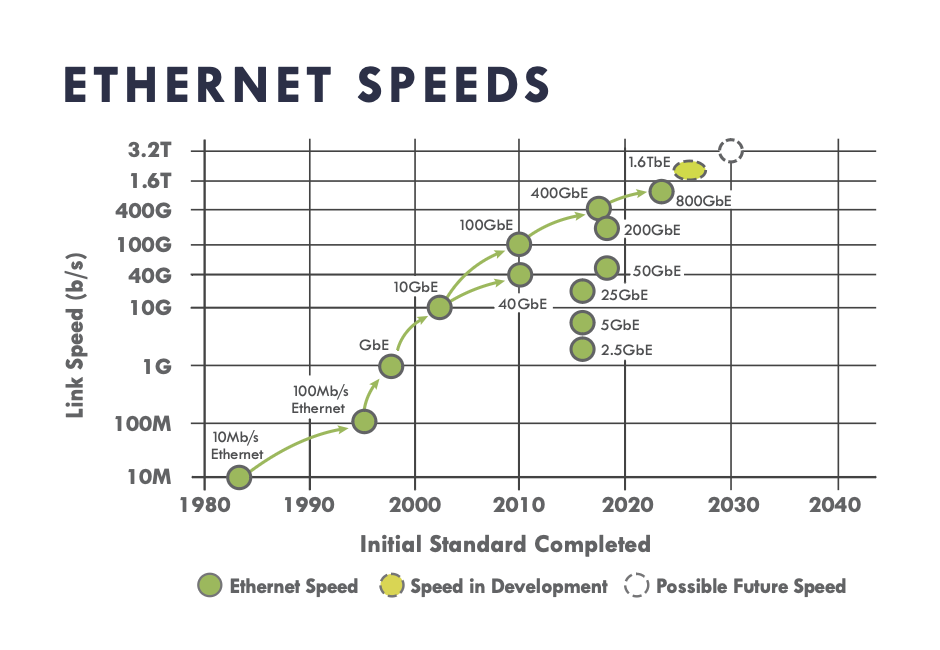
Ethernet Alliance의 허가를 받아 사용된 그래프.
또 다른 경향은 5G 네트워크의 수요를 충족하기 위해 광케이블을 사용하는 것입니다. 특히 데이터 수요가 많은 지역에서 더 빠르고 안정적인 무선 연결을 제공할 수 있습니다. 광케이블은 5G, 5.5G, 6G, 그리고 그 이후를 위한 중추가 될 것입니다.
또한 광케이블 부품의 소형화와 유연한 광케이블의 개발은 사물 인터넷(IoT) 장치의 새로운 응용 분야를 열어줄 것입니다.
빠른 데이터 전송을 위한 광케이블의 중요성은 명백하지만, 이 기술로 할 수 있는 일은 아직 훨씬 더 많습니다. 광케이블의 잠재력을 지속적으로 개발하면 더 빠른 통신이 가능할 뿐만 아니라 환경 모니터링부터 상호 연결된 세상의 안전 개선에 이르기까지 완전히 새로운 가능성을 열 수 있습니다.

